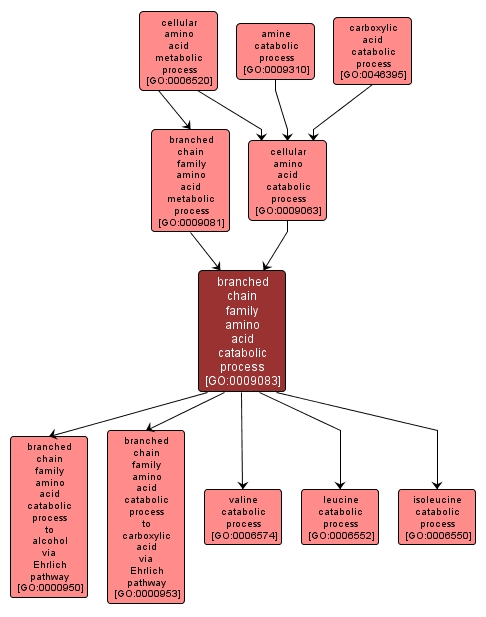GO TERM SUMMARY
|
| Name: |
branched chain family amino acid catabolic process |
| Acc: |
GO:0009083 |
| Aspect: |
Biological Process |
| Desc: |
The chemical reactions and pathways resulting in the breakdown of amino acids containing a branched carbon skeleton, comprising isoleucine, leucine and valine. |
Synonyms:
- branched chain family amino acid catabolism
- branched chain family amino acid degradation
- branched chain family amino acid breakdown
|
|

|
INTERACTIVE GO GRAPH
|














